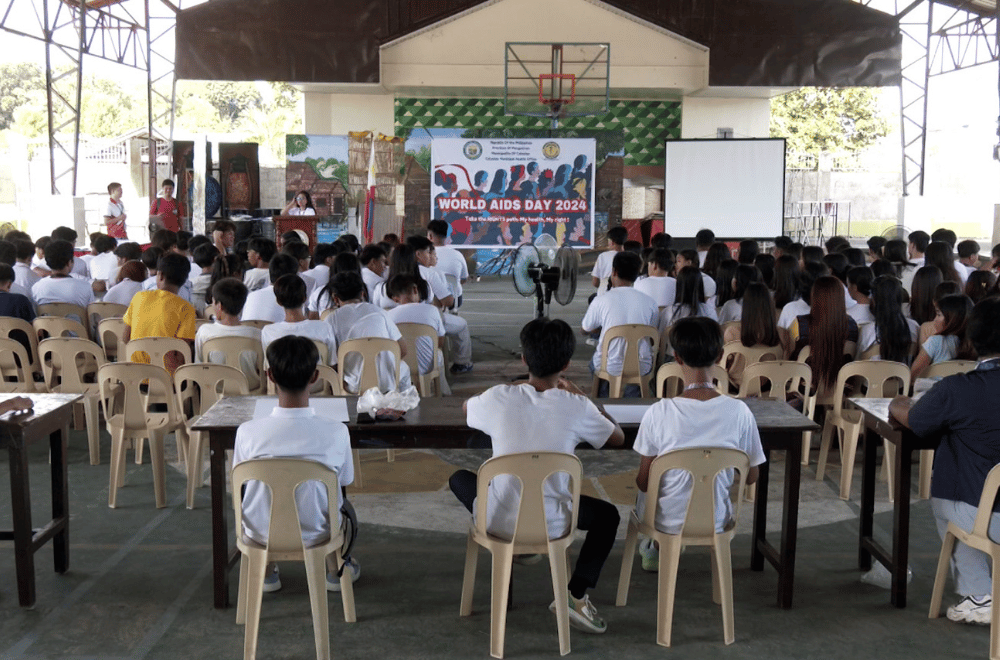Several students from Buenlag National High School in Calasiao, Pangasinan took part in a symposium on HIV/AIDS to better understand the importance of preventing the disease.
The event aimed at teaching students the seriousness of HIV/AIDS and how to avoid it.
"Before tayo gumawa ng isang action, make sure na pinag-isipan, pinag-aralan, at isinapuso natin lahat ng ginagawa natin, para sa huli, hindi natin pagsisihan," Dr. Justin Bajao, Medical Officer IV at the Calasiao Municipal Health Office, said.
With the rise in the number of young individuals contracting HIV, authorities are focusing on education.
Dr. Ma. Divina Aquino, Principal of Buenlag National High School, highlighted the importance of integrating HIV/AIDS education into subjects like Science and Music, Arts, PE, and Health (MAPEH).
According to the Center for Health Development-1, there have been 3,787 reported HIV cases in the Ilocos Region since 1984. Of this number, 458 were reported between January and August of 2024.
Although the increase is partly due to greater awareness and more people getting tested, health experts emphasize the need to continue intensifying HIV education and prevention efforts.
Dr. Rheuel Bobis, spokesperson for the Center for Health Development-1, explained the need to fight misconceptions about HIV.
"Isa rin 'yan sa ating nilalabanan. 'Yung maling paniniwala sa HIV, kasi maraming naniniwala na kapag nakipag-usap, nakipaghalikan, o mahawakan man lang itong mga taong may HIV, maaari na silang mahawa nito," he said.
According to the US National Institute of Health's Office of AIDS Research, HIV can be transmitted when certain bodily fluids are shared between people.
These include blood, semen or "cum," pre-seminal fluid or "pre-cum," vaginal fluids, rectal fluids, and breastmilk.
HIV can be transmitted during vaginal or anal sex, through sharing needles for drugs or tattoo, by getting pricked with a needle that has the blood of someone who has HIV, pregnancy, and through breastfeeding.
Health authorities continue to encourage regular testing at accredited facilities, especially for those who may have been exposed to the virus.
Symptoms of HIV often appear within three to six weeks after exposure and can be easily mistaken for other viral infections, so it is important not to ignore them.
HIV Symptoms (according to DOH):
- Fever
- Chills
- Fatigue
- Rashes
- Muscle pains, joint pains
- Sore throat
- Swollen lymph nodes
- Mouth ulcers



